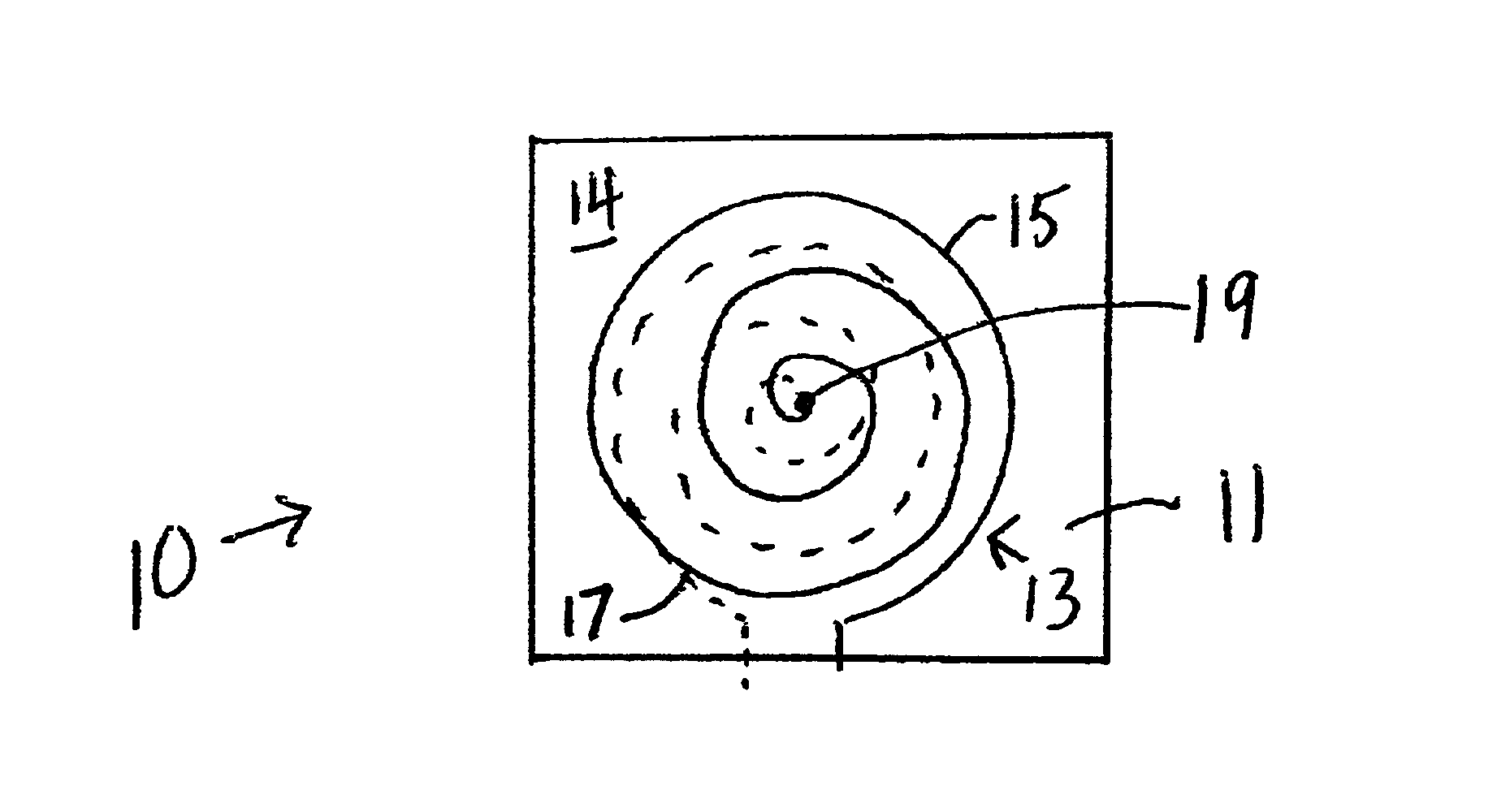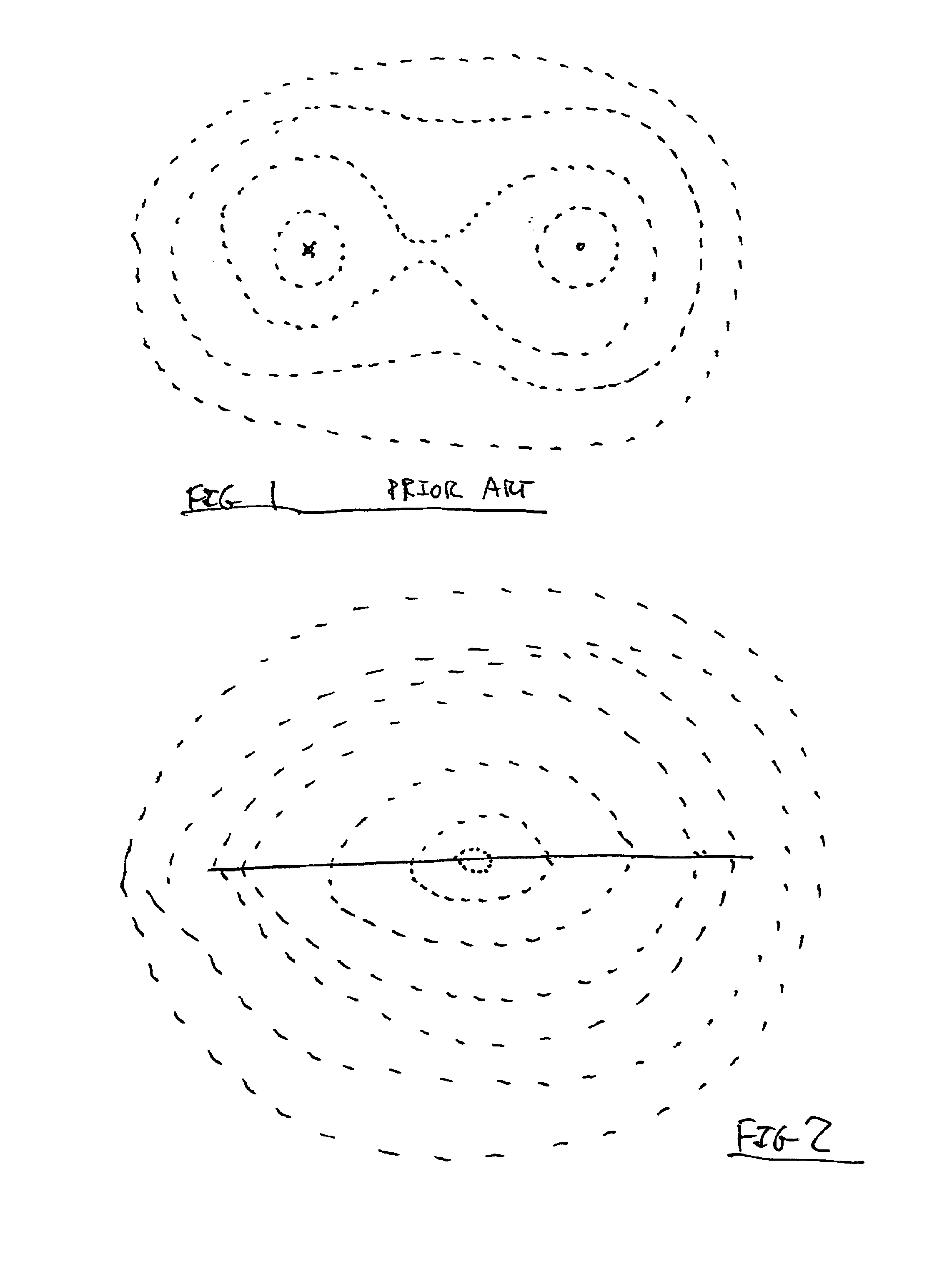Spiral magnetic transmitter for position measurement system
a magnetic transmitter and position measurement technology, applied in the direction of measurement devices, converting sensor output, medical science, etc., can solve the problems of difficult position and orientation measurement, undesirable field distortion, and the inability to perform complex surgery and diagnostic procedures, so as to achieve enhanced operation
- Summary
- Abstract
- Description
- Claims
- Application Information
AI Technical Summary
Benefits of technology
Problems solved by technology
Method used
Image
Examples
first embodiment
With reference now to FIG. 3, antenna in accordance with the teachings of the present invention is generally designated by the reference numeral 10 and is seen to include a substrate 11 that may comprise a PC board, and a transmitter generally designated by the reference numeral 13 including a spiral shape 15 mounted on the top surface 14 of the PC board, and a corresponding spiral shape 17 shown in phantom mounted on the bottom surface of the PC board. The shapes 15 and 17 are connected by a feed through 19 at the center thereof.
second embodiment
With reference to FIGS. 4-6, transmitter is generally designated by the reference numeral 20 and is seen to include three spiral transmitter coils 21, 23 and 25 associated with one another in overlapping configuration as shown in FIG. 4.
As seen in FIG. 5, the transmitter 20 may be mounted on a substrate 27 such as, for example, a PC board. If desired, in keeping with the teachings of FIG. 3, each of the spiral coils 21, 23 and 25 may also be coupled to an additional coil mounted beneath the substrate 27 and electrically connected to each respective one of the coils 21, 23 or 25 by respective feed throughs (not shown).
FIG. 6 shows a top view of the configuration shown in FIG. 5.
In one preferred configuration, the transmitters 10, 21, 23 and 25 may be constructed of a radius of 5 inches each consisting of two layers of conductor with 67 turns per layer and a pitch of 0.075 inches. Such a transmitter has an inductive of about 1.53 mH and a DC resistance of approximately 5.2 Ohms.
FIGS. ...
PUM
 Login to View More
Login to View More Abstract
Description
Claims
Application Information
 Login to View More
Login to View More - R&D
- Intellectual Property
- Life Sciences
- Materials
- Tech Scout
- Unparalleled Data Quality
- Higher Quality Content
- 60% Fewer Hallucinations
Browse by: Latest US Patents, China's latest patents, Technical Efficacy Thesaurus, Application Domain, Technology Topic, Popular Technical Reports.
© 2025 PatSnap. All rights reserved.Legal|Privacy policy|Modern Slavery Act Transparency Statement|Sitemap|About US| Contact US: help@patsnap.com



